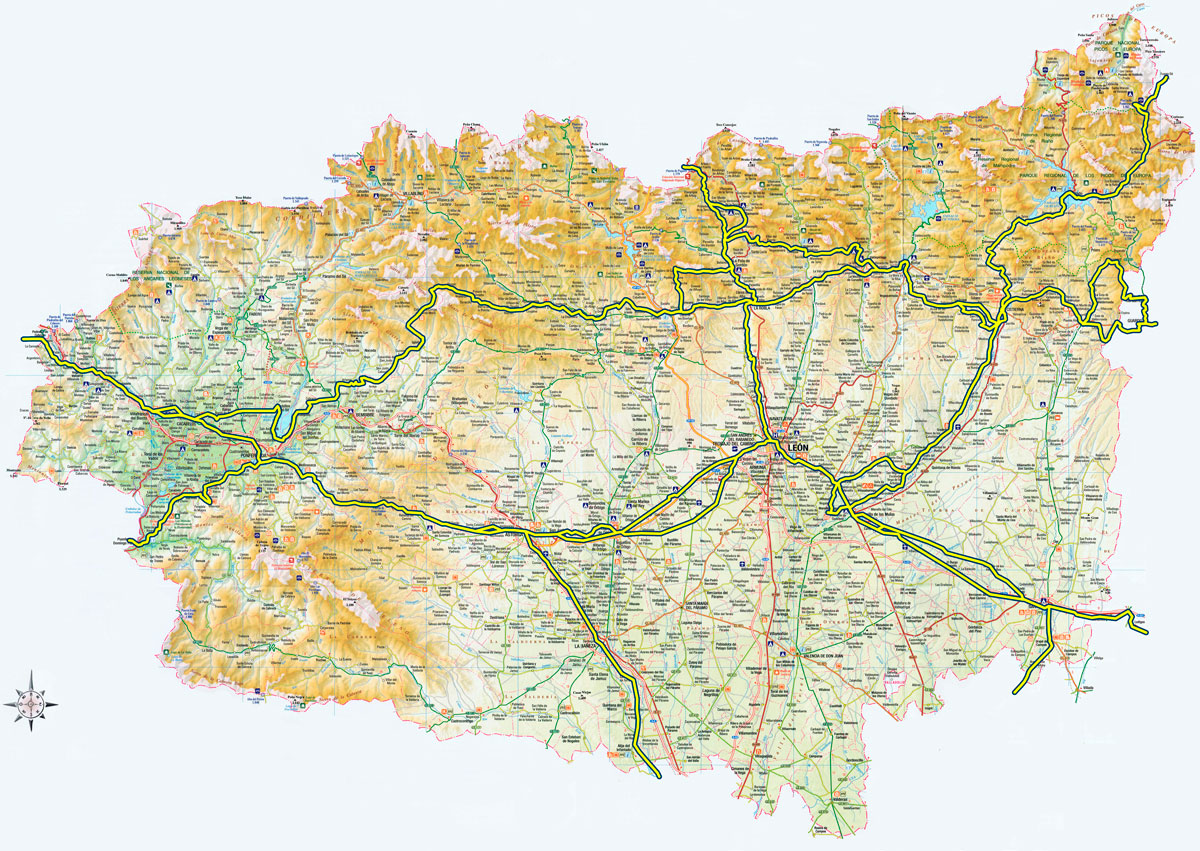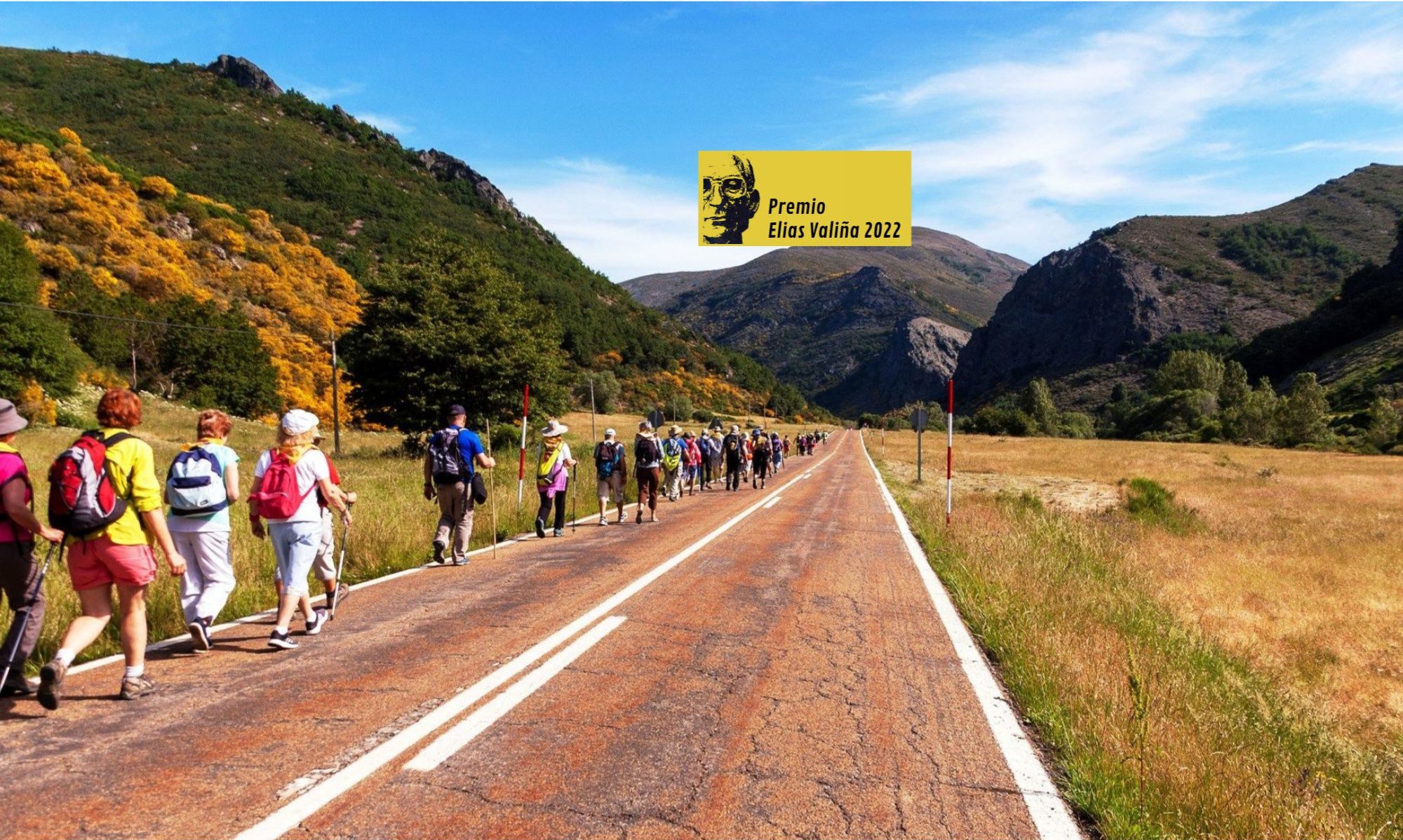
The different routes leading to Santiago de Compostela in the province of León stretch for more than 700 kilometres in seven of the currently official pilgrimage ways. Here is a map where we trace the approximate course of these routes. Please, note it is not an accurate guide! Do not hesitate to ask us for more detailed information about them or contact the associations most closely related to each one of them.
– 210 km (plus those of the two alternatives) on the French Way, whose midpoint in Spain happens to be near Sahagún de Campos in our province.
– 216 km on the Forgotten Way, currently undergoing a full revival.
– 125 km on the Vadinian Route, crossing Picos de Europa and reaching Mansilla de las Mulas, where it joins the French Way.
– 65 km on San Salvador Way, from León to Oviedo, so that those who go to “visit the Servant, do not forget to visit the Lord”.
– 50 km on the Silver Route, which joins the French Way in Astorga.
– 35 km on the Winter Way, which from Ponferrada follows the course of River Sil towards Orense, avoiding the O’Cebreiro mountain pass.
– And 22 km on the Madrid Way, joining the French Way in Sahagún.
Currently the Spanish Federation of Friends of the Camino de Santiago Associations has very complete and detailed information on the pilgrims’ Ways to Santiago de Compostela. Do not hesitate to consult their website.
They also offer information on the Albergues, which you can consult using the search engine by place, or in a list of Albergues for each route.
The French Way
The main pilgrimage route to Santiago, described since the 12th century by Aymeric Picaud in Liber Peregrinationis. It moved from the Cantabrian coast inland with the advance of the Reconquista, as it is an easier route.
It runs through the whole province of León from east to west, crossing many of the most important towns and villages, or those that have become more important over the centuries.
This Way is perfectly signposted and has abundant services for pilgrims, including its two alternative routes:
~ Between Calzada del Coto and Mansilla de las Mulas: along the Via Trajana, or via El Burgo Ranero.
~ Between La Virgen del Camino and Hospital de Órbigo: along Villadangos, o via Villar de Mazarife.
San Salvador Way
Between León and Oviedo, from where it is possible to continue to Santiago joining the Primitive or original pilgrim Way. Doing it, we comply with the saying that reminds us: “He who goes to Santiago, and not to San Salvador, visits the servant and not his Lord”. It has an alternative route that avoids a mountain pass, but which is not recommended as it takes us along a national road with a lot of traffic.
Albergues on the Way of San Salvador
The Silver Route
The heritage of the Roman road between Mérida and Astorga was also used as a route to Santiago by pilgrims from the south of the Peninsula. There are alternatives that deviate through Portugal or Sanabria (Zamora).
Albergues in the Vía de la Plata
The Forgotten Way
The Forgotten Way, the Old Way to Santiago, aka the Mountain Way, was used until the 12th century. Then it fell into disuse in favour of the more comfortable route of the French Way when the Reconquista and repopulation advanced southwards.
Currently, the route is in full recovery, and is marked from Bilbao to Villafranca del Bierzo, along the southern side of the Cantabrian Mountain Range, on ancient Roman roads and paths. Our Association collaborates in the revival of this beautiful route, and we organise pilgrimage activities to support it.
Albergues in the Camino Olvidado
The Vadinian Route
Named after a Cantabrian tribe from Roman times that inhabited the region of Liébana, the route connects the monastery of Santo Toribio de Liébana, an important pilgrimage centre due to its relic of the Lignum Crucis (a fragment of Christ’s cross), with Santiago de Compostela. It passes through Picos de Europa crossing the province of León towards the south and reaching Mansilla de las Mulas, where it joins the French Way.
Albergues in the Vadinian Route
The Winter Way
As an alternative to the O’Cebrerio mountain pass in winter, this route follows paths already used in Roman times.
The Camino de Madrid
This is a short route in our province, as it links up with the French Way in Sahagún de Campos. Nowadays it is not very busy, but it is signposted and is mentioned in many guidebooks.
